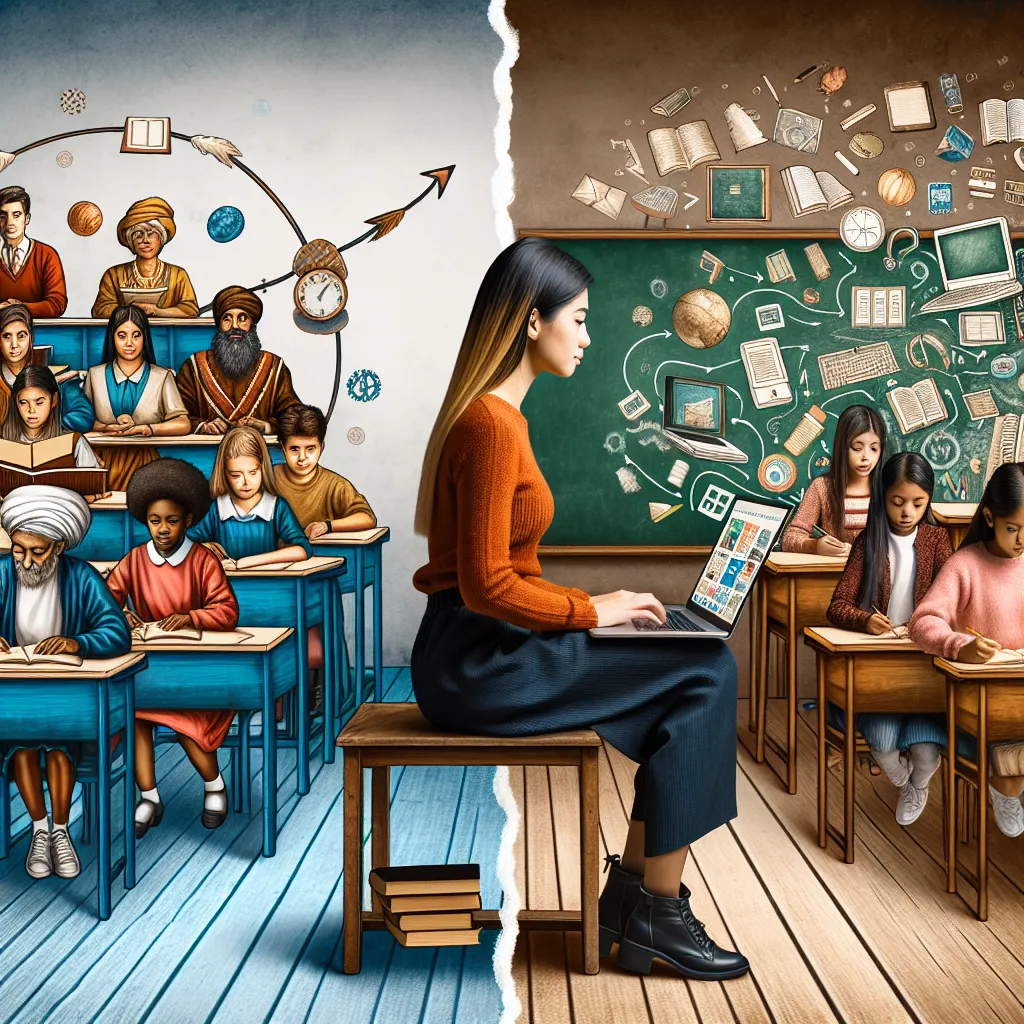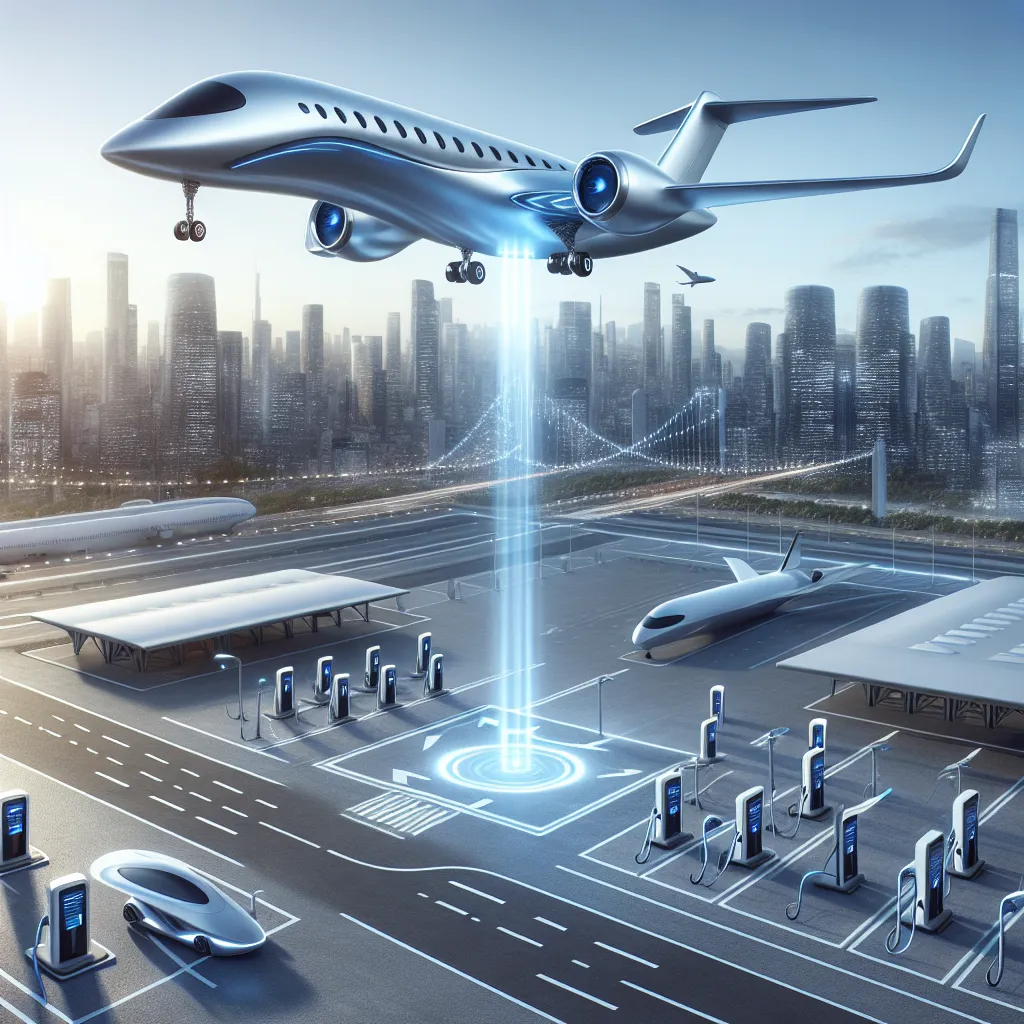Welcome to our IELTS Reading practice test focusing on “The Impact of E-learning on Traditional Education Systems.” This comprehensive test will help you prepare for the IELTS Reading section by providing realistic passages and questions that mirror the actual exam. Let’s dive into this fascinating topic and enhance your reading skills!
Table Of Contents
- Introduction
- Reading Passage 1 – Easy Text
- The Digital Classroom Revolution
- Questions 1-5
- Questions 6-10
- Reading Passage 2 – Medium Text
- The Transformation of Higher Education through E-learning
- Questions 11-15
- Questions 16-20
- Reading Passage 3 – Hard Text
- The Socioeconomic Implications of E-learning’s Integration into Traditional Education Systems
- Questions 21-26
- Questions 27-33
- Questions 34-40
- Answer Key
- Reading Passage 1
- Reading Passage 2
- Reading Passage 3
 E-learning impact on traditional education
E-learning impact on traditional education
Introduction
The rise of e-learning has significantly transformed the landscape of education worldwide. As we explore this topic through our IELTS Reading practice test, you’ll gain insights into how digital technologies are reshaping traditional education systems. This test will challenge your comprehension skills while providing valuable information on a subject that’s highly relevant in today’s digital age.
Reading Passage 1 – Easy Text
The Digital Classroom Revolution
The advent of e-learning has ushered in a new era in education, fundamentally altering the way knowledge is imparted and acquired. Traditional classroom settings, once the cornerstone of education, are now being supplemented and, in some cases, replaced by digital learning environments. This shift has been accelerated by technological advancements and the increasing accessibility of the internet, allowing students to access educational content from anywhere at any time.
E-learning platforms offer a wide array of resources, including video lectures, interactive quizzes, and virtual simulations, catering to diverse learning styles and paces. This flexibility is particularly beneficial for students who may struggle in conventional classroom settings or have commitments that make regular attendance challenging. Moreover, the integration of multimedia elements and gamification techniques in e-learning courses has made the learning process more engaging and enjoyable for many students.
However, the transition to e-learning is not without its challenges. The digital divide remains a significant barrier, with some students lacking access to the necessary technology or reliable internet connections. Additionally, the absence of face-to-face interactions can lead to feelings of isolation and reduced motivation for some learners. Educators are also faced with the task of adapting their teaching methods to suit the digital medium, which requires new skills and approaches.
Despite these challenges, the impact of e-learning on traditional education systems is undeniable. It has prompted a reevaluation of teaching methodologies, assessment techniques, and the very structure of educational institutions. As technology continues to evolve, the integration of e-learning with traditional education is likely to deepen, creating a hybrid model that leverages the strengths of both approaches.
Questions 1-5
Do the following statements agree with the information given in Reading Passage 1? Write
TRUE if the statement agrees with the information
FALSE if the statement contradicts the information
NOT GIVEN if there is no information on this
- E-learning has completely replaced traditional classroom education.
- Digital learning environments allow students to access educational content at any time.
- All students find e-learning more engaging than traditional classroom learning.
- The digital divide is no longer a problem in education.
- E-learning has led to changes in teaching methods and assessment techniques.
Questions 6-10
Complete the sentences below.
Choose NO MORE THAN TWO WORDS from the passage for each answer.
- E-learning platforms offer resources such as video lectures, interactive quizzes, and .
- The integration of in e-learning courses has made learning more enjoyable for many students.
- One challenge of e-learning is the lack of interactions.
- Educators need to develop new ___ to adapt their teaching methods for digital platforms.
- The future of education is likely to be a that combines e-learning with traditional methods.
Reading Passage 2 – Medium Text
The Transformation of Higher Education through E-learning
The landscape of higher education is undergoing a profound transformation, driven by the rapid adoption of e-learning technologies. Universities and colleges worldwide are integrating digital platforms into their curricula, blurring the lines between traditional on-campus experiences and remote learning opportunities. This shift is not merely a technological upgrade but a fundamental reimagining of how higher education is delivered and consumed.
One of the most significant impacts of e-learning on higher education is the democratization of access to knowledge. Massive Open Online Courses (MOOCs) have opened up prestigious university courses to a global audience, often at little to no cost. This has challenged the traditional model of higher education, where access was limited by geographical and financial constraints. Now, a student in a remote village can potentially access lectures from world-renowned professors at top universities.
However, this democratization brings its own set of challenges. The quality assurance of online courses remains a concern, as does the issue of credential recognition. Many employers still view traditional degrees more favorably than online certifications, although this perception is gradually changing. Universities are grappling with how to maintain their academic standards and reputation while expanding their digital offerings.
The pedagogical approach in higher education is also evolving in response to e-learning. Flipped classroom models, where students engage with lecture content online before attending in-person discussions, are becoming increasingly common. This approach maximizes face-to-face time for interactive learning and problem-solving, enhancing the overall educational experience. Additionally, adaptive learning technologies are being employed to personalize the learning journey for each student, addressing individual strengths and weaknesses more effectively than a one-size-fits-all approach.
Financial considerations play a crucial role in the e-learning revolution in higher education. For institutions, online courses offer the potential to reach a wider student base without the need for physical expansion, potentially increasing revenue. For students, e-learning can provide a more affordable route to higher education, reducing costs associated with relocation and on-campus living. However, the initial investment in developing high-quality online courses and platforms can be substantial for universities.
The impact of e-learning extends beyond the classroom to research and collaboration. Digital platforms facilitate global research partnerships and interdisciplinary collaboration on an unprecedented scale. Researchers can now easily share data, methodologies, and findings across continents, accelerating the pace of scientific discovery and innovation.
As we look to the future, it’s clear that e-learning will continue to shape higher education. The challenge lies in harnessing its potential while addressing its limitations, ensuring that the core values of academic rigor and intellectual growth are maintained in the digital realm.
Questions 11-15
Choose the correct letter, A, B, C, or D.
-
According to the passage, what is one of the most significant impacts of e-learning on higher education?
A) Increased tuition fees
B) Improved classroom facilities
C) Greater access to knowledge
D) Enhanced sports programs -
What challenge does the democratization of higher education through e-learning present?
A) Overcrowding of physical campuses
B) Concerns about quality assurance
C) Increased competition among universities
D) Higher dropout rates -
How are universities adapting their pedagogical approach in response to e-learning?
A) By eliminating all face-to-face interactions
B) By focusing solely on online lectures
C) By implementing flipped classroom models
D) By reducing the number of courses offered -
What financial benefit does e-learning offer to students?
A) Free tuition for all online courses
B) Guaranteed scholarships
C) Reduced costs associated with on-campus living
D) Higher salaries upon graduation -
How does e-learning impact research in higher education?
A) It limits research to online sources only
B) It facilitates global research partnerships
C) It decreases the need for research funding
D) It slows down the pace of scientific discovery
Questions 16-20
Complete the summary below.
Choose NO MORE THAN TWO WORDS from the passage for each answer.
E-learning is transforming higher education by providing wider access to knowledge through platforms like MOOCs. However, there are concerns about (16) and recognition of online credentials. The (17) in higher education is evolving, with methods like flipped classrooms becoming more common. (18) technologies are being used to personalize learning experiences. Financially, e-learning offers universities the chance to reach more students without (19) , while potentially reducing costs for students. E-learning also facilitates (20) in research on a global scale.
Reading Passage 3 – Hard Text
The Socioeconomic Implications of E-learning’s Integration into Traditional Education Systems
The integration of e-learning into traditional education systems is catalyzing a paradigm shift that extends far beyond the confines of classrooms and campuses. This technological revolution in education is reshaping socioeconomic structures, altering workforce dynamics, and challenging long-held notions about the nature of learning and credentialing. As we navigate this transition, it is crucial to examine the multifaceted implications of this integration on society, economy, and individual empowerment.
One of the most profound impacts of e-learning’s assimilation into traditional education is the democratization of knowledge. By transcending geographical and temporal constraints, e-learning platforms have the potential to level the playing field, offering high-quality educational resources to individuals regardless of their socioeconomic background or physical location. This democratization process is particularly significant in developing regions, where access to traditional educational institutions may be limited. However, this potential for equality is tempered by the reality of the digital divide, which continues to exclude significant portions of the global population from these opportunities. The challenge lies in bridging this divide to ensure that the benefits of e-learning are equitably distributed.
The integration of e-learning is also precipitating a reevaluation of the economic value of education. Traditional models of education have long been associated with substantial financial investments, both in terms of tuition fees and opportunity costs. E-learning platforms, with their scalability and reduced overhead costs, have the potential to significantly lower the financial barriers to education. This shift could lead to a more educated workforce, potentially driving economic growth and innovation. However, it also raises questions about the perceived value of online credentials compared to traditional degrees, a perception that is slowly evolving as employers adapt to the changing educational landscape.
Moreover, the rise of e-learning is catalyzing changes in the labor market and workforce development. The flexibility and accessibility of online education allow for continuous upskilling and reskilling, enabling workers to adapt to rapidly changing job markets. This continuous learning model is becoming increasingly crucial in an era of automation and artificial intelligence, where job roles are evolving at an unprecedented pace. The integration of e-learning into corporate training programs is also reshaping how organizations develop their human capital, potentially leading to more agile and adaptable workforces.
The sociocultural impact of this integration cannot be overstated. E-learning platforms facilitate cross-cultural exchanges and global collaborations, exposing learners to diverse perspectives and fostering a more interconnected global community. This exposure has the potential to enhance cultural understanding and promote global citizenship. However, it also challenges traditional educational paradigms that are often deeply rooted in local cultures and contexts. Striking a balance between global connectivity and preserving cultural diversity in education remains a complex challenge.
The integration of e-learning is also influencing pedagogical approaches and cognitive development. The interactive and multimedia-rich nature of many e-learning platforms caters to diverse learning styles and may enhance engagement and retention. However, concerns persist about the impact of screen-based learning on cognitive processes, attention spans, and social skills development, particularly among younger learners. Educators and policymakers are tasked with developing strategies that harness the benefits of e-learning while mitigating potential negative effects on cognitive and social development.
Furthermore, the rise of e-learning is challenging traditional notions of educational institutions and their role in society. Universities and schools are no longer the sole gatekeepers of knowledge and credentialing. This shift is prompting these institutions to redefine their value propositions and adapt their models to remain relevant in the digital age. Some are embracing hybrid models that combine the best of both worlds, while others are focusing on unique experiences and services that cannot be replicated online.
As we look to the future, the integration of e-learning into traditional education systems presents both opportunities and challenges. It has the potential to create more inclusive, flexible, and responsive educational ecosystems that can adapt to the needs of a rapidly changing world. However, realizing this potential requires addressing issues of access, quality assurance, and the evolving needs of learners and society at large. The success of this integration will depend on our ability to navigate these complexities, ensuring that the transformation of education serves to empower individuals and advance societal progress in an equitable manner.
Questions 21-26
Complete the summary below.
Choose NO MORE THAN TWO WORDS from the passage for each answer.
The integration of e-learning into traditional education systems is having significant socioeconomic implications. It is leading to the (21) of knowledge, potentially leveling the playing field in education. However, the (22) remains a challenge in achieving equal access. E-learning is changing perceptions about the (23) of education and influencing the labor market by enabling continuous (24) and . The sociocultural impact includes facilitating (25) and global collaborations. This integration is also affecting (26) ___ and cognitive development, raising both opportunities and concerns.
Questions 27-33
Do the following statements agree with the claims of the writer in Reading Passage 3? Write
YES if the statement agrees with the claims of the writer
NO if the statement contradicts the claims of the writer
NOT GIVEN if it is impossible to say what the writer thinks about this
- E-learning has completely solved the problem of educational inequality worldwide.
- The financial barriers to education are potentially lower with e-learning platforms.
- Employers universally prefer online credentials to traditional degrees.
- E-learning facilitates continuous learning, which is crucial in the current job market.
- The integration of e-learning always preserves local cultural contexts in education.
- There are concerns about the impact of screen-based learning on cognitive processes.
- Traditional educational institutions are becoming obsolete due to e-learning.
Questions 34-40
Choose the correct letter, A, B, C, or D.
-
According to the passage, what is one of the main challenges in the democratization of knowledge through e-learning?
A) Lack of quality content
B) The digital divide
C) High costs of technology
D) Resistance from traditional institutions -
How is e-learning affecting the economic value of education?
A) It is increasing tuition fees
B) It is making education more expensive
C) It has the potential to lower financial barriers
D) It has no effect on the cost of education -
What impact does e-learning have on workforce development?
A) It makes upskilling unnecessary
B) It slows down skill acquisition
C) It enables continuous upskilling and reskilling
D) It only benefits certain industries -
What sociocultural impact of e-learning is mentioned in the passage?
A) It eliminates cultural differences
B) It promotes global citizenship
C) It decreases cross-cultural understanding
D) It has no effect on cultural exchange -
What concern is raised about the impact of e-learning on younger learners?
A) Improved cognitive processes
B) Enhanced social skills
C) Potential negative effects on attention spans
D) Increased academic performance -
How are traditional educational institutions responding to the rise of e-learning?
A) By closing down completely
B) By ignoring the trend
C) By only offering online courses
D) By redefining their value propositions -
What does the author suggest is necessary for the successful integration of e-learning into traditional education systems?
A) Completely replacing traditional systems
B) Focusing solely on technological advancements
C) Addressing issues of access and quality assurance
D) Ignoring the evolving needs of learners
Answer Key
Reading Passage 1
- FALSE
- TRUE
- NOT GIVEN
- FALSE
- TRUE
- virtual simulations
- multimedia elements
- face-to-face
- skills
- hybrid model
Reading Passage 2
- C
- B
- C
- C
- B
- quality assurance
- pedagogical approach
- Adaptive learning
- physical expansion
- global partnerships
Reading Passage 3
- democratization
- digital divide
- economic value
- upskilling, reskilling
- cross-cultural exchanges
- pedagogical approaches
- NO
- YES
- NO
- YES
- NOT GIVEN
- YES
- NO
- B
- C
- C
- B
- C
- D
- C
This comprehensive IELTS Reading practice test on “The Impact of E-learning on Traditional Education Systems” provides a thorough examination of the topic while challenging your reading and comprehension skills. By engaging with these passages and questions, you’ve not only prepared for the IELTS exam but also gained valuable insights into the evolving landscape of education in the digital age.
For more practice and information on related topics, you might find these articles helpful:
- How E-learning is Improving Access to Education in Rural Areas
- [The Role of Digital Literacy in Education](


